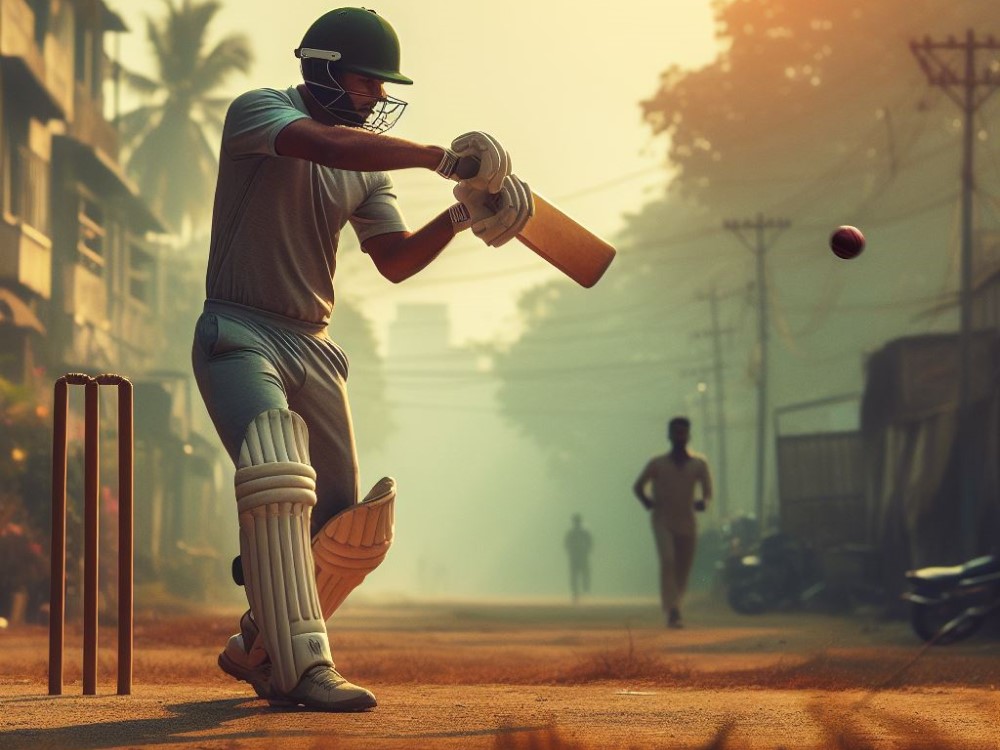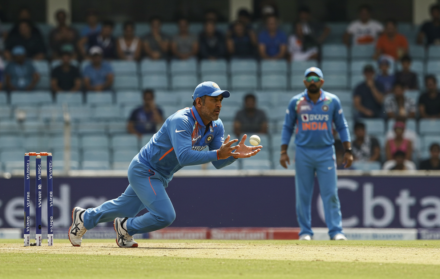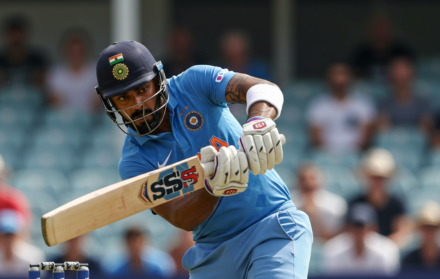
How Can You Perfect Your Cricket Batting Stance
A proper cricket batting stance serves as the foundation for success at the crease, underpinning effective shot-making technique. Recognizing the significance of a well-executed stance and its constituent elements is paramount for any cricketer aspiring to excel.
As endorsed by seasoned coaches and players, critical factors to prioritize include balance and stability to facilitate control and power generation, as well as ensuring a correct grip on the bat for optimal control and maneuverability.
To refine your batting stance, adhere to recommended steps such as adopting a shoulder-width stance to establish a stable base, maintaining head and eye alignment to enhance judgment and timing, and flexing your knees to facilitate agility and swift adjustments.
Additionally, aligning shoulders appropriately enhances bat control and execution of shots, while fine-tuning the bat grip ensures both control and flexibility.
While honing your stance, steer clear of common pitfalls such as improper positioning relative to the stumps, instability in knee placement, and excessive grip tension. Elevate your stance refinement through practices such as seeking guidance from experts for personalized feedback, employing video analysis to pinpoint areas necessitating improvement, adapting to diverse conditions through varied pitch scenarios and bowler types, and remaining receptive to adjustments informed by feedback and personal observations.
Through diligent adherence to fundamental principles, meticulous technique refinement, and persistent practice, you can elevate your batting prowess and unlock your full potential on the cricket field.
Understanding the Importance of a Proper Batting Stance

- Understanding the Importance of a proper batting stance is crucial for a successful cricket player.
- To improve your performance, follow these steps to help you perfect your batting stance:
- Stand facing the bowler with your feet shoulder-width apart.
- Keep your weight evenly distributed on both feet.
- Position your head and eyes level, focusing on the bowler’s hand.
- Hold the bat with both hands, ensuring a firm grip.
- Keep your front shoulder facing towards the bowler.
- Bend your knees slightly to maintain balance and flexibility.
- Practice your stance regularly to develop muscle memory.
Components of a Good Batting Stance
Crafting a solid batting stance is a crucial aspect of mastering the art of cricket batting. In this section, we’ll explore the two key components that contribute to a good batting stance: balance and stability, and the correct grip on the bat.
Uncovering the secrets behind these elements will provide you with the foundation needed to enhance your performance at the crease. So, let’s dive in and unlock the secrets to perfecting your cricket batting stance!
Balance and Stability
The key to a prosperous cricket batting stance is maintaining balance and stability throughout your body.
To perfect your cricket batting stance:
- Stand with your feet shoulder-width apart.
- Position your head and eyes to focus on the bowler’s hand.
- Bend your knees and maintain flexibility for quick movements.
- Align your shoulders properly to face the oncoming ball.
- Adjust the grip on the bat for optimal control.
Common mistakes to avoid include standing too far or too close to the stumps, overextending or collapsing the front knee, and gripping the bat too tightly.
Suggestions to refine your batting stance:
- Work with a coach or experienced player for guidance.
- Utilize video analysis to identify any areas for improvement.
- Practice in different conditions to adapt your stance.
- Experiment and make adjustments based on feedback and personal comfort.
By focusing on balance and stability, you can develop a solid foundation for a successful cricket batting stance.
Correct Grip on the Bat
A successful cricket batting stance requires a correct grip on the bat. Follow these steps to ensure you have the correct grip:
- Hold the bat with your dominant hand at the top of the handle.
- Place your non-dominant hand just below your dominant hand, ensuring that the palms of both hands are facing each other.
- Maintain a firm but not overly tight grip, allowing for flexibility and control of the bat.
- Position your fingers around the handle, with your top hand firmly gripping the bat to maintain control.
- Make sure that your grip on the bat is both comfortable and stable, enabling you to swing it with ease.
Steps to Perfect Your Cricket Batting Stance

Crafting the perfect cricket batting stance is crucial for success on the field. In this section, we’ll dive into the step-by-step process of achieving that ideal stance to boost your performance. From positioning your head and eyes to adjusting the grip on the bat, we’ll cover it all.
So, let’s get ready to elevate your batting game by mastering the essential elements of a flawless cricket batting stance.
Stand with Your Feet Shoulder-Width Apart
When it comes to perfecting your cricket batting stance, stand with your feet shoulder-width apart. This provides a solid foundation and allows for better balance and stability during your swing.
Here are the steps to achieve this stance:
-
- Start by positioning your feet parallel to the crease.
- Ensure that your weight is evenly distributed between both feet.
- Bend your knees slightly to maintain flexibility.
- Keep your head and eyes level, focused on the bowler.
- Align your shoulders properly, keeping them square to the pitch.
Position Your Head and Eyes
To properly position your head and eyes in your cricket batting stance, here are some steps you can follow:
- Ensure that your head remains still and level, always facing towards the bowler.
- Direct your focus on the bowler’s hand throughout their delivery stride.
- Avoid any unnecessary head movement or looking away, as this can negatively impact your judgement and timing.
- Maintain a relaxed and attentive gaze, allowing your eyes to diligently track the ball from the bowler’s hand.
- Ensure that your head stays aligned with your body, promoting proper balance and stability.
Bend Your Knees and Maintain Flexibility
To maintain a proper batting stance in cricket, it is crucial to bend your knees and maintain flexibility. Here are some steps to help you achieve this:
- Stand with your feet shoulder-width apart.
- Position your head and eyes in line with the ball.
- Bend your knees to create a stable base.
- Maintain flexibility in your knees, enabling quick movement.
- Align your shoulders properly to maintain balance.
By following these steps, you will be able to bend your knees and maintain flexibility, which is essential for a solid batting stance in cricket.
Align Your Shoulders Properly
To align your shoulders properly in your cricket batting stance, follow these steps:
- Stand with your feet shoulder-width apart.
- Maintain proper alignment of your shoulders.
- Keep your head and eyes facing the bowler.
- Bend your knees and maintain flexibility.
- Ensure that your shoulders are positioned parallel to the pitch, without being squared or open.
- Hold the bat with a relaxed grip, allowing your wrists to be loose.
Adjust the Grip on the Bat
To adjust the grip on the bat in cricket, follow these steps:
- Ensure a firm grip by holding the bat with both hands.
- Place your dominant hand at the bottom of the handle, while positioning the non-dominant hand above it.
- Keep your fingers relaxed, promoting flexibility and ease of movement.
- Position your hands close together with minimal gap between them.
- Align your knuckles to secure a strong grip on the bat.
- Make necessary adjustments to the grip based on personal comfort and feel.
By adjusting the grip on the bat, you can improve control, maneuverability, and power in your cricket batting stance.
Common Mistakes to Avoid

When it comes to perfecting your cricket batting stance, avoiding common mistakes can make all the difference. In this section, we’ll delve into the key blunders that many cricketers tend to make.
From standing too far or too close to the stumps to overextending or collapsing the front knee, and even gripping the bat too tightly, we’ll uncover these pitfalls and provide insights on how to rectify them. So, let’s sharpen our stance and avoid these slip-ups for a winning batting performance.
Standing Too Far or Too Close to the Stumps
- When it comes to cricket, standing too far or too close to the stumps can have a significant impact on a batter’s performance. To make sure you avoid this common mistake and optimize your batting stance, follow these steps:
- First, position yourself at the crease, aligning the toe of your back foot with the middle stump.
- Next, ensure there is an equal distance between both of your feet and the middle stump, which will create a balanced stance.
- Remember to maintain a comfortable gap between your front foot and the crease. This will give you the flexibility needed for quick movements.
- Distribute your weight evenly between both of your feet. This will enhance your stability and maneuverability.
- During practice sessions, make use of different distances from the stumps to fine-tune your positioning.
By avoiding the mistake of standing too far or too close to the stumps, batters can achieve a more effective batting stance. This will ultimately lead to improved performance and greater scoring opportunities.
Overextending or Collapsing the Front Knee
In cricket batting stances, it is crucial to avoid the common mistake of overextending or collapsing the front knee. Overextending the front knee can result in loss of balance and diminished power in shots, while collapsing the front knee can hinder movement and impede shot execution.
To prevent these errors, maintaining a slight flex in the front knee throughout the batting stance is vital. This enables better weight transfer, stability, and efficient shot-making. Refining and perfecting the cricket batting stance can be achieved by practicing with a coach or experienced player, utilizing video analysis, and experimenting with adjustments.
Gripping the Bat Too Tightly
When it comes to gripping the bat in cricket, it is crucial to find the right balance. Gripping the bat too tightly can have adverse effects.
By gripping the bat excessively, you constrain the flexibility of your wrists, which hinders your ability to execute shots effectively. This excessive tight grip can also impact your batting technique, leading to a loss of control and power in your shots. It is absolutely essential to maintain a relaxed grip on the bat, enabling better control and maneuverability.
Engaging in proper grip practice and regularly monitoring the pressure of your grip can assist you in avoiding the common mistake of gripping the bat too tightly.
Practicing and Refining Your Batting Stance

Looking to perfect your cricket batting stance? In this section, we’ll uncover the secrets to practicing and refining your stance. Discover how working with a coach or experienced player can unlock new insights.
Unleash the power of video analysis to fine-tune your technique. Explore the benefits of practicing in different conditions and how it can elevate your performance. Plus, get ready to experiment and make those crucial adjustments. It’s time to take your batting stance to the next level!
Work with a Coach or Experienced Player
When refining your batting stance in cricket, it is extremely beneficial to work with a coach or an experienced player. The presence of a coach or experienced player can offer valuable guidance and insights into proper technique, ultimately helping you enhance your skills.
There are several reasons why working with a coach or experienced player is important in this regard.
- Obtaining expert guidance: A coach or experienced player possesses extensive knowledge and expertise in batting techniques, making them an invaluable resource to learn from.
- Receiving feedback and correction: By closely observing your stance, a coach or experienced player can easily identify any mistakes or areas that require improvement, and provide constructive feedback to assist you in making necessary corrections.
- Getting tailored advice: A coach or experienced player will be able to tailor their guidance to your specific needs and abilities, enabling you to develop a batting stance that is perfectly suited to your individual style of play.
- Engaging in practice drills: Utilizing their expertise, a coach or experienced player can present you with an array of drills and exercises specifically designed to enhance your batting stance. This ensures that you not only learn the correct technique, but also make progress in your overall performance.
- Benefiting from mentorship and motivation: Having an experienced individual by your side can serve as a mentor and a source of inspiration, motivating you to work harder and push yourself to reach your maximum potential.
Utilize Video Analysis
- Utilize video analysis as a valuable tool to enhance your cricket batting stance.
- Effectively incorporate video camera or smartphone to record your batting stance from various angles.
- Analyze your positioning, balance, and movements by reviewing the captured footage.
- Identify areas for improvement by comparing your stance with professional players or experienced coaches.
- Make necessary adjustments to correct any flaws or inconsistencies in your technique.
- Track your progress and refine your technique over time by continuing to record and analyze your stance.
Practice in Different Conditions
Practicing in various game situations by adapting to different conditions is essential for improving performance and developing adaptability in cricket batting. To help you practice effectively in different conditions, follow these steps:
- Experiment with playing on various types of pitches, including slow, fast, or uneven ones.
- Adjust to different weather conditions, such as playing in windy or rainy conditions.
- Practice at different times of the day to experience the variations in light and shadow.
- Simulate different match scenarios, like facing spin bowlers or fast bowlers.
- Engage in diverse practice sessions with a variety of bowlers to enhance your ability to adjust quickly.
By consistently practicing in different conditions, you can develop the ability to adapt to any situation that arises during a cricket match, leading to improved performance.
Experiment and Make Adjustments
Making adjustments to your cricket batting stance is crucial for improving your performance at the crease. Here are some steps to help you experiment and make adjustments effectively:
- Watch and analyze your own batting footage to identify areas for improvement.
- Consult with a coach or experienced player who can provide valuable insights and guidance.
- Experiment with different foot positions, grip styles, and weight distribution to find what feels most comfortable and effective for you.
- Practice your adjusted stance in different conditions, such as on different pitches or against varying bowler styles.
- Continuously review and make further adjustments as necessary based on your performance and feedback from coaches or teammates.
Remember, the process of experimenting and making adjustments to your cricket batting stance is crucial for enhancing your overall technique and performance at the crease. Good luck!





